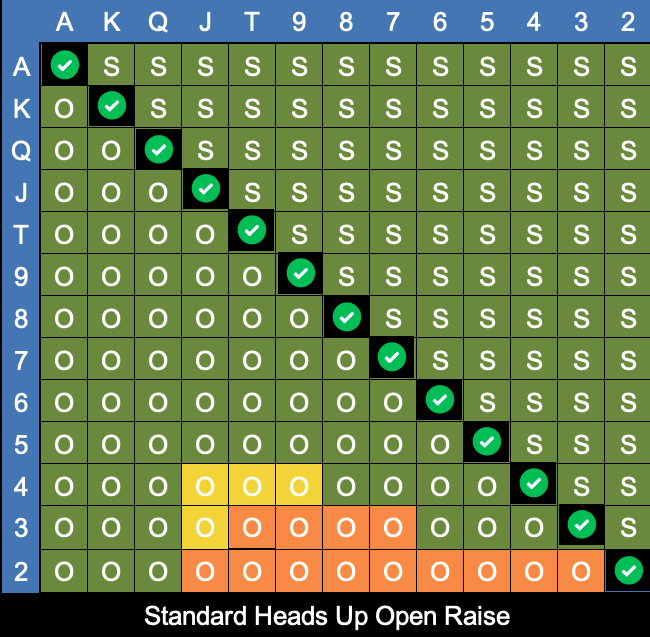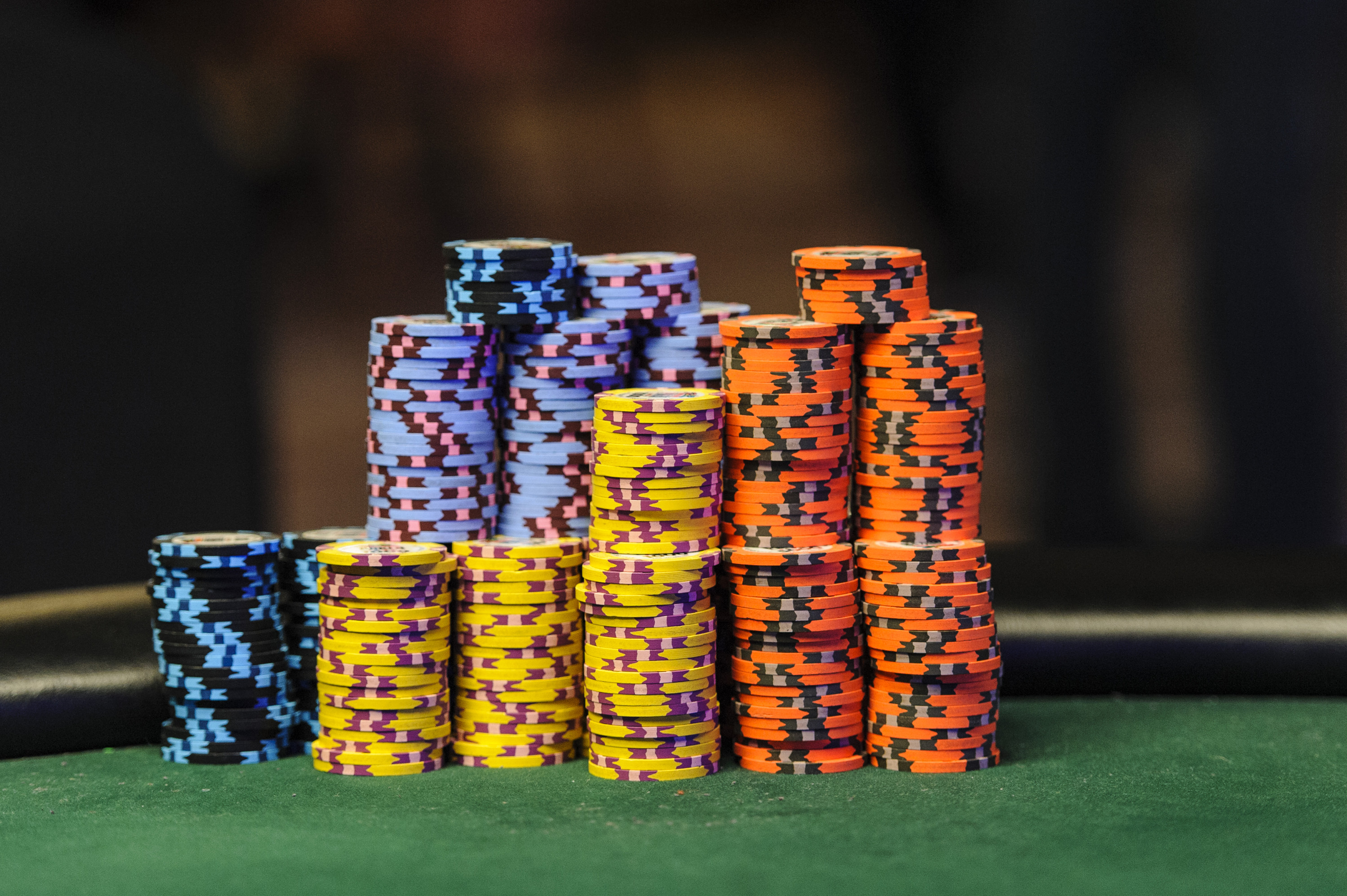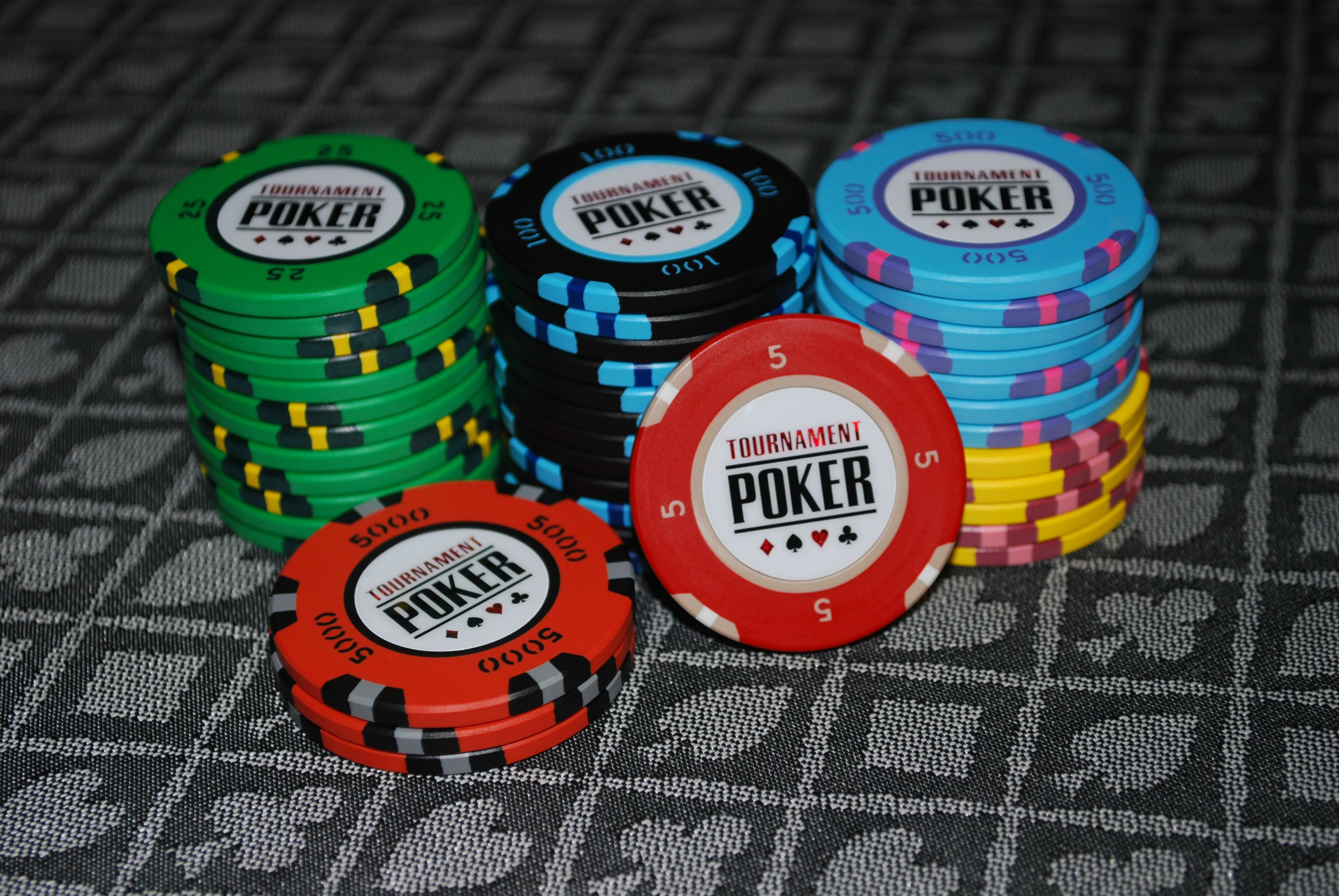Poker Chips Starting Stack Calculator
So, let's say you start out at 25-50 with 100 players and 10,000 starting stack, no re-buys so there's 1 million in tourney chips in play. You can expect to be very near the end when you have, say 4 players, with an average stack of 250,000, and your blinds are between 1/20 and 1/10 the average stack. Poker Chip Stack Calculator Rizk Casino is here to give you the chance to net up to £100 + 50 free spins over 5 days, for a truly fabulous start to casino life. Unique Casino permanent Wager: x30 (bonus + deposit) Min deposit: £20.
- If you use a different size starting stack, feel free to adjust the above starting points as needed. You may also feel it necessary to use different starting denominations, particularly if you start everyone with more than $1000. As promised, here is a list of standard poker chip colors.
- Check out the new Poker Chip Calculator – great for managing your home poker tourneys and working out starting poker chip distributions! It’s free to use and free to download and install on your own computer – you don’t even need to be connected to the internet to use it from home – just start it up and go.
- The first big blind should be 1/50 of the starting chip amount. (or the starting chip amount should be 50 times the starting big blind). So if everyone starts with 1000 in chips the first big blind should be 10/20. Blind period is the time each blind lasts: Typical tournament blind periods are 10, 15, 20, 30, or 60 minutes.
The advanced ICM Calculator can be used to determine ICM and chip chop distributions for deals in tournaments and simplifies poker tournament deal negotiations.
Just enter stack sizes and prize money for up to 9 players and hit “Calculate ICM Distribution”. A more detailed description for the ICM Calculator is below.
Stacks and prizes
Stacks and prizes

Raw Output and ICM Results
How to use the advanced ICM Calculator
Enter the Data
We’ll just focus on the Standard Input mode for now:
- Stack Sizes: Enter the stack sizes for each player, leave fields blank if you’re running a calculation for less than 9 players.
- Prizes: Enter the prizes for each position. Please only use decimals. Prizes will be sorted descending when calculating.
- Money set aside: If you want to you can set aside some money which still will be played for after the deal. This amount must be smaller than the difference between 1st and 2nd place.
Once you’re done, hit the button “Calculate ICM Distribution” and the Poker Deal Calculator does it’s magic.
Prize Money Distribution
The ICM calculator shows how much money each player receives according to the Independent Chip Model (or ICM).
It’s also possible to show how much a chip chop deal pays out or even how much a mix of both deals pays out. This can be done via fine tuning. More about fine tuning below.
Below the table is a link (Shareable link to this calculation) which can be used to share this calculation. Any possible fine tuning will be shared as well.
ICM Finish Distribution
The ICM calculator also provides a detailed table which shows how likely it is, each player finishes in any position. This calculation is based purely on ICM and the stack sizes.

Advanced ICM Calculator Options
There are some options that make this ICM Deal Calculator stand out a bit. Let’s go through them.
Advanced Input
The Advanced Input doesn’t look very advanced, it’s just a text box. But copy-pasting chip counts and prizes from other sources is sometimes easier than manually entering all the information.
- Stack Sizes: The advanced input scans the first lines until the first blank line for stack sizes. It also supports player names. Just use the format “name stack-size”. If you don’t use a name, the calculator will assign the usual “Player x” names.
- Prizes: After the first blank line the advanced input scans for prizes until the next blank line.
- Options: Below that are options – all of which can be set when fine tuning (see below). Meaning: don’t adjust these options here.
Fine Tuning
When you tick the checkbox “Fine tune results” you get a set of options to adjust the results of the calculation. Those are the options:
- Allow chip chop excess: When calculating chip chop deals (see below) there can be rare occurrences where the deal allots more money to first place then the payouts would. This happens when there is a single huge chip leader. Default option for this calculator is to not allow such a deal. This calculator redistributes any excess allotments proportionally between the other players. If the checkbox is ticked, deals which allow more than first place money for any player are possible.
- Round results: You can choose to round the results to the nearest multiple of 1, 5, 10, 50, 100, 500 or 1,000. If the sum of the rounded payouts doesn’t equal the sum of prizes, the rounding error will be added or deducted to or from the player where the error has the least impact.
- ICM or Chip-Chop: By default the calculator provides a pure ICM deal. But it’s also possible to calculate a chip chop deal (just move the slider to the far right). It is also possible to calculate a weighted average of both deals. Since ICM deals usually favor short stacks and chip chop deals favor big stacks, sometimes it might be a good idea, to mix both deals. But in general chip chop deals are a rather bad idea for almost all players involved.
Fine tuning the individual payouts
When fine tuning is enabled you’ll see pluses and minuses pop up in the prize money distribution table. With those buttons you can manually adjust the payouts for each player.
Clicking plus or minus adjusts the payout for the player by (very roughly) 1 percent. In return the payout for each other player is adjusted accordingly, so that the sum of the payouts always stays the same.
You can use this option, when one player wants at least so and so much when negotiating a deal. When negotiating a deal online you use the shareable link option to send other players a link to the specific adjustment.
Question, remarks, suggestions, bugs? Please leave a comment below!
Relevant Resources
- What is ICM? A detailed explanation of ICM.
- Independent Chip Model on Wikipedia
What are poker blinds ?
Based on the limit of the poker game the player to the left of the dealer’s button (small blind) and the player two to the left of the dealer (big blind) are required to place mandatory bets in the pot before cards are dealt (Small blind has to put half of the big blinds amount). These bets count toward the first round of betting. So if the pot is not raised pre-flop, small blind will only have to put half a bet to call and big blind has the option of raising or just checking.
In a poker tournament, blinds go up gradually. This is to ensure that the tournament finishes on a timely manner. (the higher the blinds get the more players tend to get eliminated).
Blinds usually go up after predetermined periods of time. (for example every 15 or 20 minutes).

Two main factors determine blind structure of the game:
- Starting chip amount
- How long you want the tournament to last.

Poker Blind Structure Tips
- The first big blind should be 1/50 of the starting chip amount. (or the starting chip amount should be 50 times the starting big blind). So if everyone starts with 1000 in chips the first big blind should be 10/20.
- Blind period is the time each blind lasts:
- Typical tournament blind periods are 10, 15, 20, 30, or 60 minutes.
- Blinds period should be the same for every blind.
- The faster the blind period is the faster the tournament ends and the more luck involves. So it’s a good idea to have slightly longer blind periods at your house game. 15 or 20 minute blind periods are good choices. Blinds in online websites tend to go up faster. This is because online poker action is much faster than live poker.
- Blinds typically double after each round. If the first big blind is 10/20, the next one should be 20/40.
Full Stack Poker Free Chips

Poker Chips Starting Stack Calculator For Dummies
Calculate Blind Structure
Follow these simple steps to create blind structure that best fits your game:
- Decide your starting chip amount.
- Divide it by 50. This should be your first big blind.
- Make your final big blind (when the tournament should finish) equal to your starting chip amount.
- Arrange the middle level blinds so that they gradually increase from your first big blind to the last one. It is best to keep the first couple blind periods low.
- Add the period (times) together. If it seems too long takes couple levels off the chart, and if it seems short add couple level to the chart.
Sample Tournament Blind Structure Chart
How To Stack Poker Chips
Following is a chart of recommended blind structures based on different starting chip stacks :
Starting Poker Chip Count
| Blind Period | Chip Stack | |||
| 100 | 1000 | 2500 | 5000 | |
| 1 | 1/2 | 10/20 | 25/50 | 50/100 |
| 2 | 2/4 | 20/40 | 50/100 | 100/200 |
| 3 | 3/6 | 30/60 | 75/150 | 150/300 |
| 4 | 5/10 | 50/100 | 100/200 | 200/400 |
| 5 | 10/20 | 75/150 | 200/400 | 300/600 |
| 6 | 15/30 | 100/200 | 300/600 | 500/1000 |
| 7 | 25/50 | 150/300 | 500/1000 | 750/1500 |
| 8 | 50/100 | 200/400 | 750/1500 | 1000/2000 |
| 9 | 75/150 | 300/600 | 1000/2000 | 1500/3000 |
| 10 | 100/200 | 400/800 | 1500/3000 | 2000/4000 |
| 11 | 150/300 | 500/1000 | 2000/4000 | 3000/6000 |
| 12 | 200/400 | 1000/2000 | 2500/5000 | 5000/10000 |